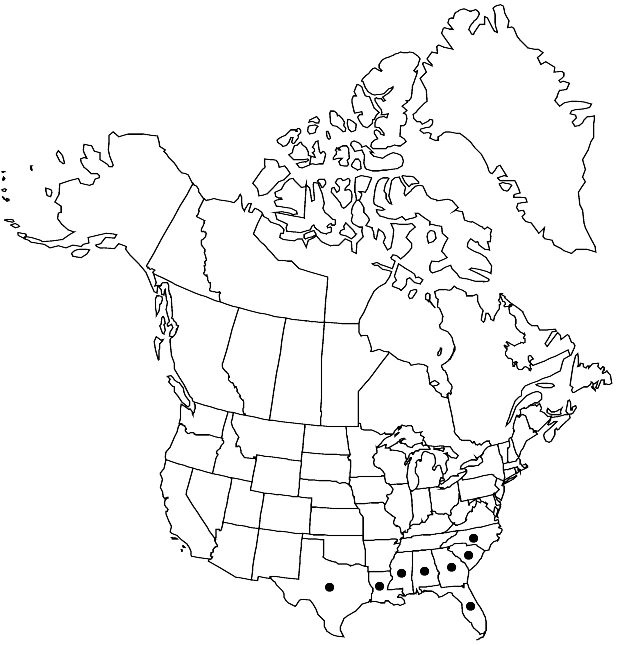Descurainia pinnata subsp. pinnata
Plants usually glandular, rarely eglandular, usually not canescent. Stems unbranched basally, branched distally. Racemes: rachis sparsely to densely pubescent, often glandular. Fruiting pedicels divaricate to horizontal or descending, forming (60–) 70–90 (–110) º angle, 4–14 (–17) mm. Flowers: sepals rose (at least apically), 0.8–2 mm; petals 1–1.8 × 0.3–0.7 mm. 2n = 14, 28.
Phenology: Flowering Feb–Apr.
Habitat: Roadsides, waste grounds, disturbed sites, railroad tracks and embankments, grassy areas, sandy knolls, stream banks, abandoned fields
Elevation: 0-600 m
Distribution

Ala., Fla., Ga., La., Miss., N.C., S.C., Tex.
Discussion
R. C. Rollins (1993) indicated that subsp. pinnata grows in Oklahoma and Virginia. We have not seen material of it from those states, and it is likely that those records are based on plants of subsp. brachycarpa.
Selected References
None.
Lower Taxa
"elongated" is not a number."thick" is not a number."dm" is not declared as a valid unit of measurement for this property."dm" is not declared as a valid unit of measurement for this property.